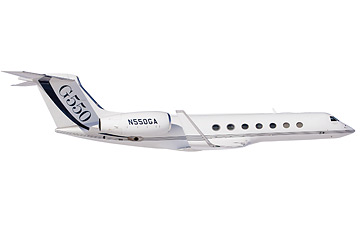
(2 of 3)
The watch of choice at present is the Patek Philippe. The top model retails for $800,000 to $900,000, and its purchase requires the following protocol: an interview with the company in Geneva, approval and placement on a waiting list of one to four years. Waiting lists and 10-figure net worths are like oil and water, however. And hedgies are paying heartily to avoid them. Serious watch seekers are buying theirs slightly used and at a premium, at auction, all for a quicker fix. A Sky Moon Tourbillon that is reversible with two faces recently sold at Antiquorum for more than $1.2 million, the additional $300,000 considered chump change for the joy of jumping the line.
"These guys love watches because, in a world of computers, this is traditional technology. Everything's done mechanically, with gears and wheels rather than electronics. It's really hard to do," says Philip Duffell of Cellini, where the Jean Dunand Grande Complication ($700,000) changes the date through 2100, knows leap years and long and short months, and chimes. Other hits include the F.P. Journes Sonnerie Souveraine ($553,200) and the Audemars Piguet Grande Complication ($559,800). "This isn't a watch an old chap buys," Duffell says.
Cellini also carries, but rarely displays, a single 50-carat, D-flawless diamond, which once belonged to H.H. Begum Sultan Mohamed Shah Aga Khan and was discovered in the famed Golconda mines of India. "It's elementally pure, spectacular perfection. We don't show it that much," Duffell says. "We like it."
In the art world, where precious supply is low, demand has skyrocketed. And prices have followed. "Art is so fashionable right now," says Marc Porter, president of Christie's America. "What seemed an almost unimaginable threshold that only a few works of art were crossing becomes, in short order, the level that wonderful works of art cost." Impressionists, the rarest, bring top dollar and desire. Last year Christie's sold four Gustav Klimts for just under $200 million, on a per-painting basis nearly double the $25 million a single work by the artist had captured previously. Shortly thereafter, however, Ronald Lauder's purchase of Klimt's portrait of Adele Bloch-Bauer ($135 million) blew away that record, becoming the highest price ever paid for a painting.
Among the hedge-fund generation, postwar and contemporary art remain the hot tickets. "It's most interesting to people because it reflects the time they were, or before they were, born and because great works are still available. It's possible to build a collection," says Porter, whose sale in November features Untitled XXIII (estimated at $16 million to $19 million) by Willem de Kooning, whose works are particularly sought after, as are those of Jeff Koons and Damien Hirst. The influx of interest and capital has made for the most successful living artists in history. "There are more artists making a living and doing well than ever before," says Porter. Indeed, Christie's recently acquired the London gallery Haunch of Venison because modern collectors want access to the newest art being produced.
It is Warhol, however, who is truly unbeatable. A panel screen of Sixteen Jackies, which went for about $5 million less than 10 years ago, sold for $15.6 million in November 2006. Art, and Warhol especially, is considered a better investment than stocks, a fact that is hardly lost on this consumer (who is also quicker than ever to unload art for the right price). "Warhol has surged dramatically over the past few years," Porter says. "Two hundred million is beyond the record for any work of art, but there are 20 works of art currently in private hands, including the greatest of Warhol, that we would identify as worth $200 million today, absolutely."
An entire industry is cropping up in response to the demand for ultra-unique and personal service—getting what one wants when one wants it. It's called concierge. "Our members are people who have a lot more money than time," says Ed Rosenthal, coo of the club Quintessentially. "We do anything and everything for them, as long as it's not illegal." For a recent vacation, for instance, a small group of hedgies asked to be dropped in the Amazon for four days with nothing but knives. Oh, they had a side stipulation: serious risk of injury or death was O.K. "I had to read the e-mail three times to make sure I got it right," Rosenthal says. The club arranged the trip and scheduled survival training with the Brazilian Special Forces.